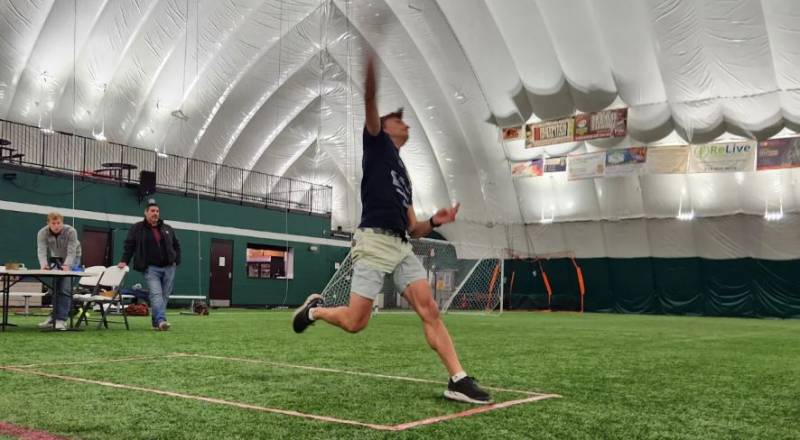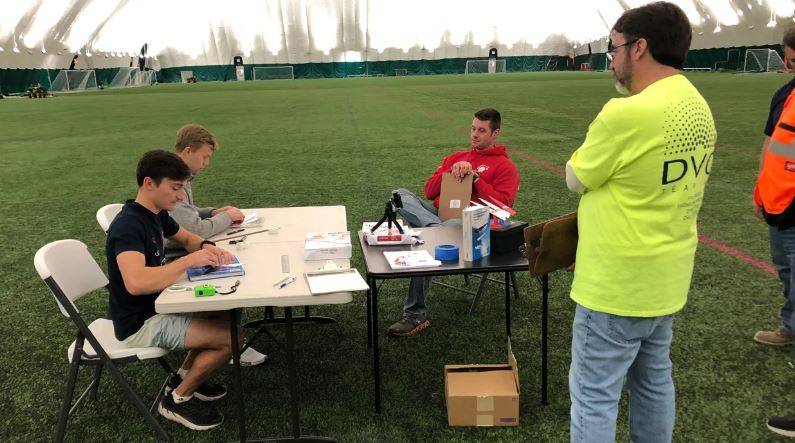Paper plane designed by Boeing engineers breaks world distance record: report

Stay tuned with 24 News HD Android App

The world record for the farthest flight by paper plane has been broken by three aerospace engineers with a paper aircraft that flew a grand total of 289 feet, 9 inches (88 meters), nearly the length of an American football field.
According to CNN, They beat the previous record of 252 feet, 7 inches (77 meters) achieved on April 2022 by a trio in South Korea. Prior to that, the record had not been broken in over a decade.
“It really put things on the map and it’s a really proud moment for family and friends,” said Dillon Ruble, a systems engineer at Boeing and now paper plane record holder, in a release. “It’s a good tie in to aerospace and thinking along the lines of designing and creating prototypes.”

Ruble worked alongside Garrett Jensen, a strength engineer also with Boeing, and aerospace engineer Nathaniel Erickson. The trio are recent graduates who studied aerospace engineering and mechanical engineering at Missouri University of Science and Technology.
The feat required months of effort, as the team put in nearly 500 hours of studying origami and aerodynamics to create and test multiple prototypes. The engineers put their final design to the test on December 2, 2022, in Crown Point, Indiana, where the record was achieved on Ruble’s third throw.
“We hope this record stands for quite a while — 290 feet (88 meters) is unreal,” Jensen said in the release. “That’s 14 to 15 feet (4.2 to 4.6 meters) over the farthest throw we ever did. It took a lot of planning and a lot of skill to beat the previous record.”
The team had decided their best chance at beating the world record would be with an aeroplane design that focused on speed and minimized drag so that the plane could fly a far distance in a short amount of time.

Gathering inspiration from various hypersonic aircraft, vehicles that can fly faster than five times the speed of sound (Mach 5), specifically the NASA X-43A, the team had come up with the winning paper aircraft design — later named “Mach 5.”
“Full-scale and paper aeroplanes have vast differences in their complexity, but both operate on the same fundamental principles,” said Ruble, via email. “Some of the same design methodologies can be applied to both. One of these methods was our trial-and-error design process. For instance, we would theorize about a fold we could change on our plane, fold it, throw it, and compare the distance to previous iterations to determine if the change was beneficial.”
Ruble (from left) and Erickson fold their paper aeroplanes with witnesses overseeing. The engineers had to pay careful attention to the numerous rules and guidelines set forth by the Guinness World Record Team.
Ruble (from left) and Erickson fold their paper aeroplanes with witnesses overseeing. The engineers had to pay careful attention to the numerous rules and guidelines set forth by the Guinness World Record Team.
To find the best technique when it came to throwing the paper airplane, the team ran various simulations and analyzed slow-motion videos of their previous throws.
“We found the optimal angle is about 40 degrees off the ground. Once you’re aiming that high, you throw as hard as possible. That gives us our best distance,” Jensen said in the statement. “It took simulations to figure that out. I didn’t think we could get useful data from a simulation on a paper airplane. Turns out, we could.”
Even down to the paper, the team had decided that A4 (slightly longer than typical letter-sized paper) was the best for manipulating and folding into the winning airplane. With these meticulously thought-out design choices, and careful attention to the numerous rules and guidelines set forth by the Guinness World Record Team, the three were set to break a record.
